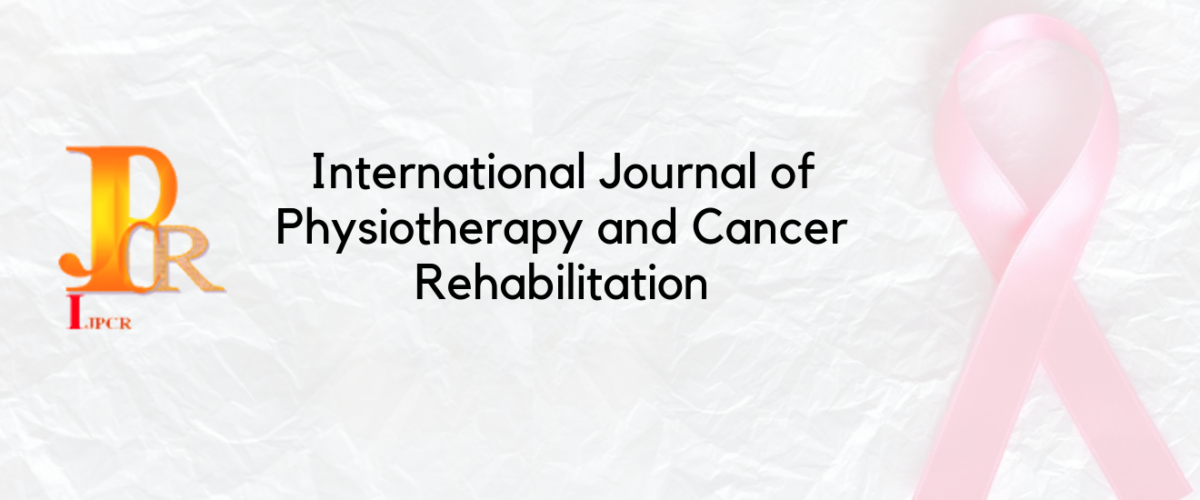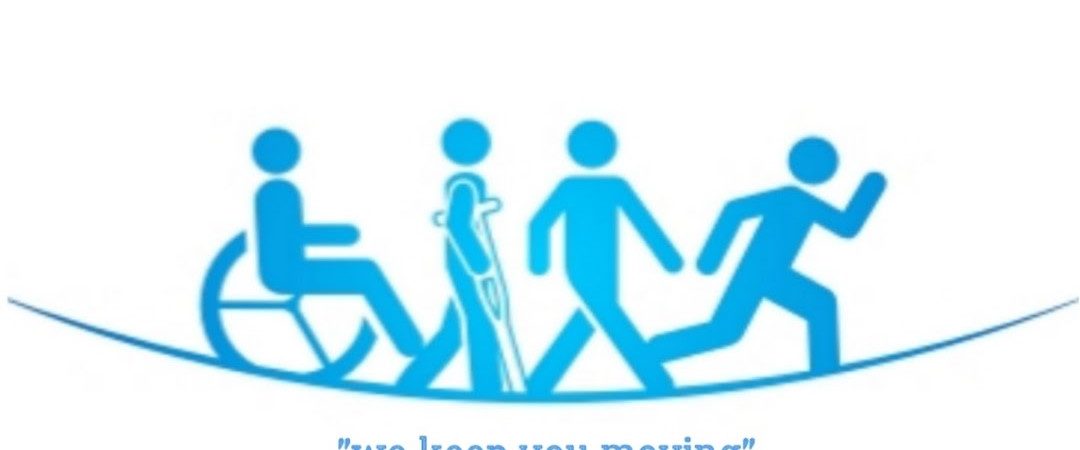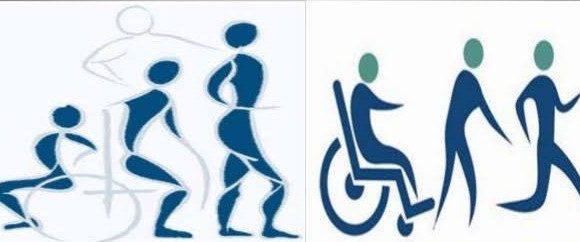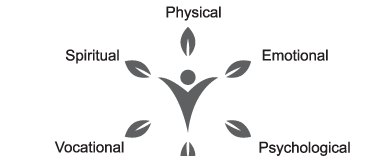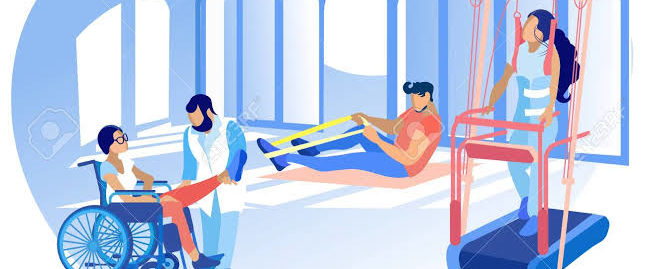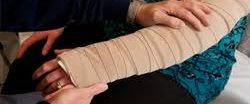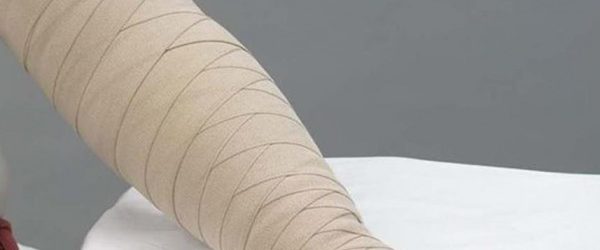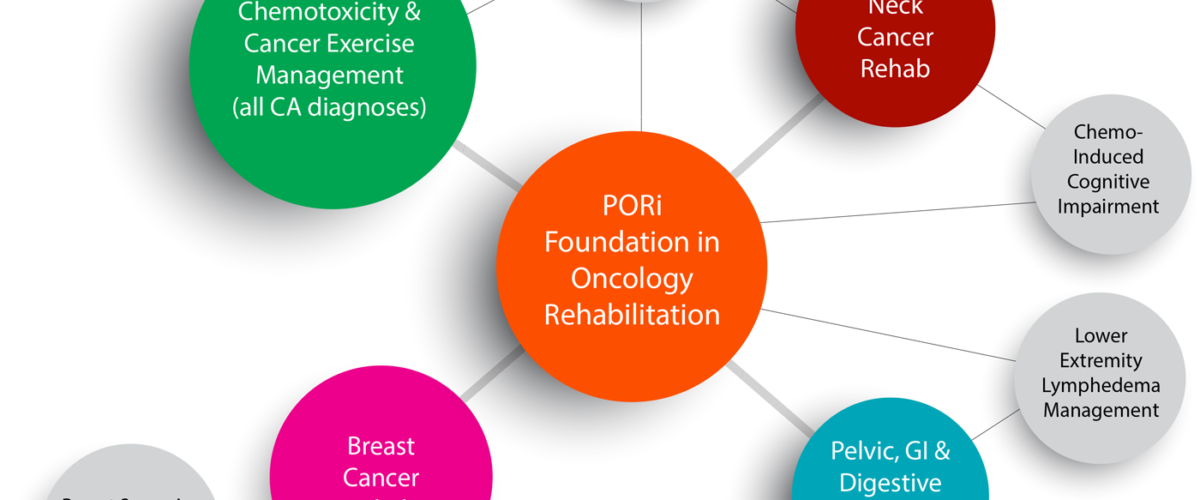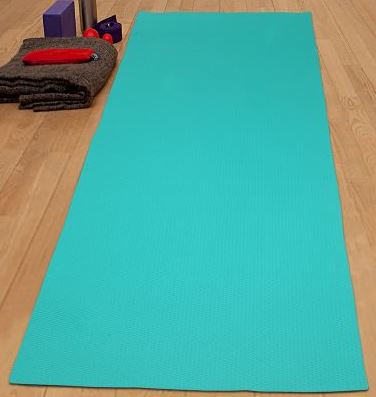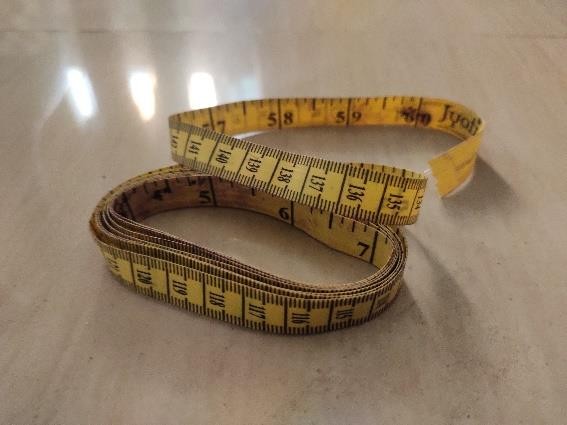COMPARING THE EFFECTS OF SURYANAMASKAR VERSUS CORE STABILIZATION USING PILATES BALL ON WEIGHT REDUCTION AMONG COLLEGIATE PLAYERS – Dr. Vinod Nair
COMPARING THE EFFECTS OF SURYANAMASKAR VERSUS CORE STABILIZATION USING PILATES BALL ON WEIGHT REDUCTION AMONG COLLEGIATE PLAYERS.
Dr. Vinod Nair,
Assistant Professor
Dept. of Physiotherapy
J.R.N. Rajasthan Vidyapeeth Deemed to be University
Udaipur (Raj.)
ABSTRACT
Background: Obesity is defined by world health organization (WHO) as abnormal or excessive fat accumulation that presents a risk to health. A study analyzed the prevalence of obesity is 107.7 million in children and 603.7 million in adults over 70 countries between the year 1980 and 2015. Studies state that abdominal obesity is an emerging health problem, especially Indians are genetically susceptible to fat accumulation around the waist. Obesity as the serious problems of public health, since it considerably increases the risk of chronic diseases, such as cardiovascular diseases, stroke, diabetes, balancing difficulties and certain kinds of cancer. The purpose of the present study is to compare the effects of Suryanamaskar and Dynamic soft tissue mobilization on balance and weight reduction in obese collegiate players.
Aim: To compare the effectiveness of SURYANAMASKAR and CORE STABILIZATION on balance and weight reduction.
Methodology: The present study includes 30 students of both genders in the age group of 18- 24 years with BMI of above 30. The participants are allocated into two groups Group A (suryanamaskar) n=15, Group B (core stabilization) n=15. The intervention period for both the group is 6 weeks. The pre and post session outcome measures were taken using BMI, waist circumference and Y- Balance test.
Result: There was a significant improvement in the post session measures of BMI, waist circumference and Y- Balance test (p ≤ 0.0001). Conclusion: The present study concluded that both Suryanamaskar and Core stabilization shows significant improvement in reducing the weight and improving balance. But the mean difference shows there was more weight reduction in suryanamaskar group and balance is significantly improved in core stabilization group.
Key words: Suryanamaskar, Core stabilization, Waist circumference, BMI and Y- balance test.
INTRODUCTION:
Obesity is defined by world health organization (WHO) as abnormal or excessive fat accumulation that presents a risk to health. The most commonly used parameter to measure obesity is body mass index (BMI) it is calculated by the persons weight in kilogram divided by the square of the height in meters . A person with the BMI of 30 or more is generally considered as obese [1]. The guidelines of WHO state that alternative measures that reflect abdominal obesity is waist circumference (WC). In recent studies the data were analyzed using cut offs point for Asians as 90cm in men and 80 cm in women [2].
A study analyzed the prevalence of obesity is 107.7 million in children and 603.7 million in adults over 70 countries between the year 1980 and 2015 [3].Studies state that abdominal obesity is an emerging health problem, especially Indians are genetically susceptible to fat accumulation around the waist. Obesity as the serious problems of public health, hence there is considerable increase in the risk of chronic diseases, such as cardiovascular diseases, hypertension, CVA, diabetes mellitus, osteoarthritis and certain kinds of cancer. Recently obesity has become a global phenomenon which rapidly increasing and more common in women [4]. And the recent survey conducted on obesity showed about 1.6 billion over weight and 400 million obese people in the world [5]. A review on causes of obesity among university students suggested that physical inactivity, alcohol use, smoking. And dietary behaviour, consumption of red meat, intakes of fiber, high number of meals, skips breakfast more often, snacking behavior [6].
Study stated that balance or posture control is imperative in activities of daily life, as compared to healthy individual balancing is less difficult for obese persons [7]. Y- Balance test is a reliable method to assess the balance of lower extremity which consists of three reach directions Anterior (ANT), Posteromedial (PM), and Posterolateral (PL).There are number of factors that can be assessed using this test such as lower extremity injury risk, maximal reach distance, a calculated composite score and side-to-side asymmetry[8].
SURYANAMASKAR (sun salutation) is a set of 12 asana which is preferably done in the morning while facing the sun. It has numerous health benefits for various systems of the body especially musculoskeletal, cardiovascular, gastrointestinal, nervous system, respiratory and endocrinal.
Studies states that regular practice of suryanamaskar provides improvement in strength, flexibility and improves vitality to the body. It helps in improving the blood circulation thereby mobilizing the excessive amount of fat in the body and thus helpful in reducing the weight [9]. Study done on suryanamaskar suggested that the whole musculoskeletal system is stretched and contracted in a systemic manner, there by provides more strength and flexibility to them, it also stimulates the peristaltic movement of the gut and helps to remove the hidden toxins from the body, microcirculation of the different body organs also increases resulting in oxygenation of the blood and provides good skin health. The practice of suryanamaskar stimulates every large muscle group in the body up to 97% and improves general fitness by strengthening the muscles. The yoga plank or Dandasana comes under the 12 postures of suryanamaskar which is excellent in core muscle control and thereby it improves the balance[10].
The core muscle represents a box with the abdominal muscles in the front, gluteus and paraspinals muscles in the back, the diaphragm at the top, the pelvic floor and hip muscles as the base. The major advantage of this exercise is it can be performed at any time by all the age groups and their abilities. These exercises have been frequently applied by healthy individuals in fitness and sport centers. The core training helps in stabilizing muscles of the abdomen, thorax, and back. Studies states that performing core training on an unstable surface resulted in an increased EMG activity of the core muscles [11]. Sekendiz et. Al, (2010) suggested that core stability exercise with Swiss ball improves strength, flexibility, endurance, and balance in sedentary women. Core stabilization training improves the neuromuscular system efficiency, optimal muscular balance and provides stability [12]. Study done by Seied Sajad Hosseini et al (2012) explained that core stability is a modern training procedure highly concentrate the lumbar and pelvic muscles thereby provides physical fitness parameters, balance, gait, and strength[13].
This study design was particularly aimed to found out the changes in the anthropometrics of obese adults and also to compare the effects in the two groups of exercises and how it helps them in maintaining a healthy life.
AIM OF THE STUDY:
To compare the effect of SURYANAMASKAR versus CORE STABILIZATION using PILATES ball for obese collegiate players.
OBJECTIVES OF THE STUDY:
• To compare the effect of SURYANAMASKAR versus CORE STABILIZATION using PILATES ball for obese adults to improve core strength.
• To compare the effect of SURYANAMASKAR versus CORE STABILIZATION using PILATES ball for obese adults in weight reduction.
• To compare the effect of SURYANAMASKAR versus CORE STABILIZATION using PILATES ball for obese adults to improve balance.
HYPOTHESIS:
NULL HYPOTHESIS:
There was no significant difference in comparing the effects of SURYANAMASKAR and CORE STABILIZATION exercise in weight reduction and improving balance among obese collegiate players.
ALTERNATE HYPOTHESIS:
There was significant difference in comparing the effects of SURYANAMASKAR and CORE STABILIZATION exercise in weight reduction and improving balance among obese collegiate players.
METHODOLOGY:
- STUDY DESIGN: Experimental design
- STUDY TYPE: Comparative study
- STUDY METHOD: Convenient sampling
- STUDY DURATION: 6 weeks
SAMPLE SIZE: 30
- STUDY SETTING: Department of Physiotherapy, JRNRVU
INCLUSION CRITERIA:
-
- AGE: 18-24 of age[2]
- Gender: Both male and female.
- Person with obesity class 1 and class 2
- No history of back pain or leg pain.
EXCLUSION CRITERIA:
-
- Lower extremity injury.
- Recent hip and pelvic fracture.
- Recent upper limb and lower limb fracture
- Person who are not willing to participate.
TOOLS USED:
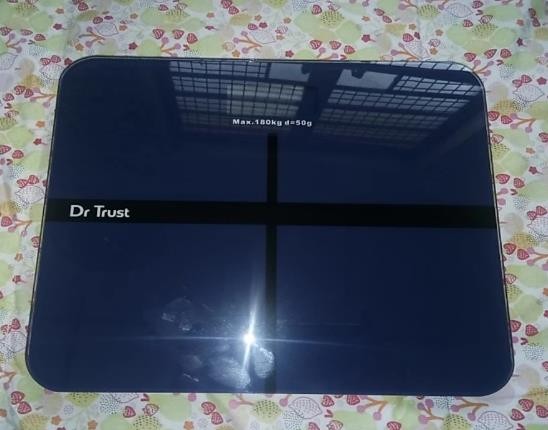 Figure 1- Weight machine Figure 1- Weight machine |
 Figure 2 PILATES ball Figure 2 PILATES ball |
| Figure 3 Yoga mat
|
 Figure 4 Tape Figure 4 Tape |
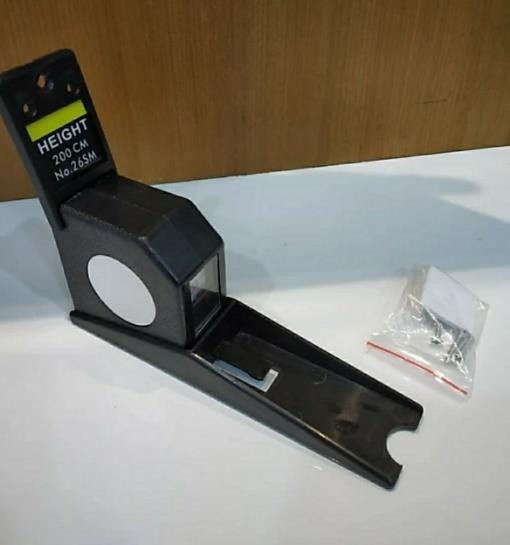 Figure 5 stature Figure 5 stature |
Figure 6 Measuring Tape
|
OUTCOME MEASURE:
- BMI
- WAIST CIRCUMFERENCE
- Y BALANCE TEST
PROCEDURE:
In this study, a convenient of 30 obese collegiate players for the study based on inclusion and exclusion criteria. They were selected based on BMI of class 1 and 2. The procedure was adequately explained to the participants before obtaining the informed concern. The concern participants agreed that they would not engage in any other exercise for 6 week period. Then the participants are divided into two groups.
Group A (15 subjects):
Suryanamaskar is given for 5 day a week for 6 weeks in the repetition of 2 sets of 12 cycles for 30 minutes a day is given.
Group B (15 subjects):
Core stabilization exercise is given for 5 day a week for 6 weeks in the repetition of 2 sets of 15 receptions for 30 minutes a day is given.
A session of warm up and cool down is given before and after the exercises for 10 min.
GROUP A:
Suryanamaskar procedure [5, 9]:
Pranamasana (Prayer pose) – 1st & 12th Pose
Stand erect with folded hands close to the chest and palms are held together in the form of prayer pose. Look straight ahead, Exhale the breath normally. (figure8)
Hasta Uttanasana (Raised arms pose) – 2nd & 11th pose
Raise both the hands up above the crown from Pranamasana pose. Inhale the breath normally while raising your hands. Bend the trunk and neck slightly backward. (Figure 9)
Padahastasana (Hand to Foot pose) – 3rd & 10th pose
Bend forward from Hasta Uttanasana pose and try to touch the floor with your both hands. Exhales breathe normally while bending forward. (Figure 10)
Ashwa Sanchalanasana (The Equestrian Pose) – 4th & 9th pose
Stretch the left leg as far back as possible from Padahastasana pose while inhaling the breath normally. At the same time, bend the right knee. While looking straight ahead the hands should be kept straight with fingers touching the floor. Arch the back a little with head tilted back. The same steps should be repeated with left knee in the second round of Surya Namaskar. (Figure 11)
Parvatasana (The Mountain Pose) – 5th & 8th pose
While exhaling, take the right leg backward from Ashwa Sanchalanasana pose and place it parallel to the left leg, raise the buttocks at the same time. Place the hands straight supporting the weight of the body. The head should be placed between the hands. (Figure 12)
Ashtanga Namaskar (Eight-Limbed salutation) – 6th pose;
Lower the body to the ground from Parvatasana pose in such a way that it touches the floor at eight locations – the head, the chest, the two palms, the two knees, and the two toes, Suspended the breath for a while. Try to lift other parts in air. (Figure 13)
Bhujangasana (The Cobra Pose) – 7th pose
While inhaling raise the body by using the hands from Ashtanga Namaskara pose. Arch your head backward. This position looks like the cobra which has raised its hood. (Figure 14)
GROUP B:
CORESTABILIZATION PROCEDURE [11, 17]:
Cross sit-up on PILATES ball:
Putting hands behind the back and making body in angle with the Neck and then with the back pressed against the ball move the hip flexion and extension in crossed manner. (Figure 15, 16)
Back extension on PILATES ball:
Place the hip pressed in the PILATES ball in the prone Lying posture slightly extend the hip with hands behind the back and making body in angle with the neck.(Figure 17).
Quadruped opposite arm – leg rise on PILATES ball:
While maintain a neutral spine kneel on the floor in a quadruped position with your knees under your hips and your hands under your shoulder. Raise the opposite arm and leg straight out maintain whole body in straight line. (Figure 18).
Dynamic Glute Bridge on PILATES ball:
Lay on mat with the arms flat by your sides, both the knees should be bent, and the feet’s should be flat on the top of The PILATES ball. The pressing the feet on PILATES ball raise the hip up. (Figure 19)
Crunch (hip on ball):
Placing hip on PILATES ball nearly touching the floor and with hands behind the Back bring the body up and down. (Figure 20, 21)
DATA ANALYSIS AND INTERPRATION:
Statistical analysis was performed by using IBM SPSS software for windows version 25. The results are calculated using <0.0001(p value) level of significance. Paired t test is used in the analysis of pretest and posttest values of both the groups and the Independent t test is used in the analysis of post session values of the groups.
COMPARISON OF PRE TEST AND POST TEST VALUES OF BMI GROUP A AND GROUP B:
Table 1:
| Exercise Group | Mean Value | Standard deviation | t value | P value | ||
| Pretest | Post test | Pre test | Post test | |||
| Group A | 31.660 | 30.713 | 1.3767 | 1.6392 | 6.250 | ≤0.0001 |
| Group B | 30.307 | 29.720 | 0.4183 | 0.4263 | 6.644 | ≤0.0001 |
Graph 1: Graph shows the COMPARISON OF PRE TEST AND POST TEST VALUES OF BMI GROUP A AND GROUP B:
32
31.5
31
30.5
30
Pre test
Post test
29.5
29
28.5
Suryanamaskar
Core stabilization
COMPARISON OF PRE TEST AND POST TEST VALUES OF WAIST CIRCUMFERENCE GROUP A AND GROUP B:
Table 2:
| Exercise Group | Mean Value | Standard deviation | t value | P value | ||
| Pre test | Post test | Pre test | Post test | |||
| Group A
(Suryanamaskar) |
98.153 | 96.820 | 6.0526 | 6.1469 | 12.092 | ≤0.0001 |
| Group B
(Corestabilization) |
94.200 | 93.673 | 6.6151 | 6.5547 | 10.694 | ≤0.0001 |
Graph 2: shows the COMPARISON OF PRE TEST AND POST TEST VALUES OF WAIST CIRCUMFERENCE GROUP A AND GROUP B:
99
98
97
96
95
Pre test
Post test
94
93
92
91
Suryanamaskar
Core stabilization
COMPARISON OF BMI:
Table 3:
| Group | Mean | Standard deviation | Standard error |
| Group A (Suryanamaskar) | 30.713 | 1.6392 | 0.4232 |
| Group B (Corestabilization) | 29.720 | 0.4263 | 0.1101 |
Graph 3: shows the COMPARISON OF BMI:
BMI
30.8
30.6
30.4
30.2
30
29.8
Suryanamaskar
Core stabilization
29.6
29.4
29.2
Suryanamaskar
Core stabilization
COMPARISON OF WAIST CIRCUMFERENCE:
Table 4:
| Group | Mean | Standard deviation | Standard error |
| Group A (Suryanamaskar) | 99.820 | 6.1469 | 1.5871 |
| Group B (Corestabilization) | 93.673 | 6.5547 | 1.6924 |
Graph 4: shows the COMPARISON OF WAIST CIRCUMFERENCE:
Waist circumference
97.5
97
96.5
96
95.5
95
94.5
94
93.5
93
92.5
92
Suryanamaskar
Core stabilization
Suryanamaskar Core stabilization
Y-BALANCE TEST GROUP A (SURYANAMASKAR):
Table 5:
| Exercise Group | Mean Value | Standard deviation | t value | P value | ||
| Pre test | Post test | Pre test | Post test | |||
| Group A (Right side) | 80.927 | 83.427 | 8.746 | 8.491 | -6.079 | <0.000 |
| Group A (Left side) | 85.067 | 87.193 | 6.406 | 5.604 | -4.426 | <0.0001 |
Graph 5: Shows the Y-BALANCE TEST GROUP A (SURYANAMASKAR):
Y-BALANCE TEST SURYANAMASKAR
88
87
86
85
84
83
82
81
80
79
78
77
RCS
LCS
PRETEST POST TEST
ALANCE TEST GROUP B (CORESTABILIZATION):
Table 6:
| Exercise Group | Mean Value | Standard deviation | t value | P value | ||
| Pre test | Post test | Pre test | Post test | |||
| Group B (Right side) | 82.433 | 87.287 | 11.9015 | 12.9902 | -7.50 | <0.000 |
| Group B (Left side) | 85.427 | 89.927 | 8.4498 | 8.8630 | -4.280 | <0.0001 |
Graph 6: shows the Y-BALANCE TEST GROUP B (CORESTABILIZATION):
Y-BALANCE TEST CORE STABILIZATION
92
90
88
86
84
82
80
78
RCS
LCS
PRETEST POST TEST
COMPARING THE Y-BALNCE TEST OF GROUP A (SURYANAMASKAR) AND GROUP B (CORESTABILIZATION):
Table 7:
| Group | Mean | Standard deviation | Standard error |
| Group A (Suryanamaskar) | 85.31 | 7.3237 | 1.3371 |
| Group B (Corestabilization) | 87.83 | 10.6739 | 1.9488 |
Graph 7: shows the COMPARING THE Y-BALNCE TEST OF GROUP A (SURYANAMASKAR) AND GROUP B (CORESTABILIZATION):
COMPARISON OF Y-BALANCE TEST OF GROUP A AND B
88.5
88
87.5
87
86.5
86
85.5
85
84.5
84
SUYANAMASKAR
CORESTABILIZATION
SUYANAMASKAR
CORESTABILIZATION
RESULT:
-
-
- Table 1: shows a significant value (p≤0.0001) on comparison between the pre (31.660) and post values (30.713) of Group A (SURYANAMASKAR) and pre (30.307) and post value (29.720) of Group B (CORESTABILIZATION) after the 6 weeks of SURYANAMASKAR and CORE STABILIZATION training.
- Graph 1: Shows a significant reduction in BMI in Group A (SURYANAMASKAR) than Group B (CORE STABILIZATION) for obese adult individuals after 6 weeks of training period.
- Table 2: : shows a significant value (p≤0.0001) on comparison between the pre (98.153) and post values (96.820) of Group A (SURYANAMASKAR) and pre (94.2) and post value (93.673) of Group B (CORESTABILIZATION) after the 6 weeks of SURYANAMASKAR and CORE STABILIZATION training
- Graph 2: Shows a significant reduction in WC in Group A (SURYANAMASKAR) than Group B (CORE STABILIZATION) for obese adult individuals after 6 weeks of training period.
- Table 3: shows a significant difference(p≤0.001) on comparison between the pre and post values of Group A (SURYANAMASKAR) (30.713+_0.4232), Group B (CORESTABILIZATION) (29.72+_0.1101) after the 6 weeks SURYANAMASKAR and CORE STABILIZATION training
- Graph 3: Shows a significant reduction in BMI in Group A (SURYANAMASKAR) than Group B (CORE STABILIZATION) for obese adult individuals after 6 weeks of training period.
- Table 4: shows a significant difference (p≤0.001) on comparison between the pre and post values of Group A (SURYANAMASKAR) (99.820+_1.5871), Group B (CORESTABILIZATION) (93.673+_1.6924) after the 6 weeks SURYANAMASKAR and CORE STABILIZATION training.
- Graph 4: Shows a significant reduction in WC in Group A (SURYANAMASKAR) than Group B (CORE STABILIZATION) for obese adult individuals after 6 weeks of training period.
- Table 5: shows a significant value (p≤0.0001) on comparison between the pre (80.927) and post values (83.427) of Group A (SURYANAMASKAR) Right side and pre (85.067) and post value (87.193) of Group A (SURYANAMASKAR) Left side after the 6 weeks of SURYANAMASKAR of Y-balance test.
- Graph 5: Shows a significant improvement in balance after a 6 weeks of SURYANAMASKAR training.
- Table 6: shows a significant value (p≤0.0001) on comparison between the pre (82.433) and post values (87.287) of Group B (CORESTABILIZATION) Right side and pre (85.427) and post value (89.827) of Group B (CORESTABILIZATION) Left side after the 6 weeks of SURYANAMASKAR of Y-balance test.
- Graph 6: Shows a significant improvement in balance after a 6 weeks of CORESTBILIZATION training.
- Table 7: shows a significant difference (p≤0.001) on comparison between the pre and post values of Group A (SURYANAMASKAR) (85.31+_1.3371), Group B (CORESTABILIZATION) (87.83+_1.9488) after the 6 weeks SURYANAMASKAR and CORE STABILIZATION training.
- Graph 7: Shows a significant improvement in Group B (CORESTABILIZATION) than Group A (SURYANAMASKAR) for obese adult individuals after 6 weeks of training period.
- The result shows a significant improvement in the weight reduction in Group A (SURYANAMASKAR) than the Group B (CORESTABILIZATION) and shows a significant improvement in balance in Group A (SURYANAMASKAR)
-
DISCUSSION:
The purpose of the study was to examine the effects of Suryanamaskar and Core stabilization exercise using PILATES ball in reducing the weight and improving balance among obese adults. In this present study, the result showed a significant improvement in the pre- test and post- test of BMI, Waist circumference and Y- Balance test in both the groups. In which the Suryanamaskar group showed significant improvement in weight reduction and core stabilization group showed significant improvement in balance. In total, there was a improvement in the post session results of both the group.
In this study, they investigated the effect of core exercise program using PILATES ball and Swiss ball among young people, they observed that there was an improvement in the fitness, flexibility, dynamic balance, strength and muscular endurance. This result findings supported my result and there was a significant improvement in balance and weight [11].The Suryanamaskar significantly reduces weight in obese women, and decreased the risk factors of obesity, the results of this study findings supported my result and there was a significant reduction in the weight [5]. Due to decrease in physical activity, diet behavior and frequent consumption of high sugary might be related to obesity in young adults. The findings of the previous study supported with the causes of obesity of this present study [2]. Suryanamaskar has significant improvement in the static and dynamic balance of obese individuals as measured using Star excursion balance test. The results of the previous findings supported with my results as there was significant improvement in balance in the Y- balance test scores in the pre-test and post-test. Dr. Sarvesh concluded that practice of Suryanamaskar significantly reduces the obesity parameters such as BMI, waist circumference, abdominal circumference among obese adults. The results of the previous findings supported with my results as there was a significant reduction in the BMI and waist circumference [19].Walter R, et.al, (2012) the study concluded that core training may enable the client or patient to improve the overall stability of the trunk and improve strength. The results of the previous findings supported with my results as there was significant improvement in balance [27]. Dr.M.Ramajayam.et.al (2016) in this study they concluded that there is significant reduction in body fat percentage and basal metabolic rate after doing surya namaskar among obese school boys [22].
The previous study supported with my results as there are significant reduction in the weight parameters of pre and posttest. Gokhan Ipekoglu, et.al, (2018) showed that the PILATES training is effective exercise programme for enhancing dynamic and static balance performance among taekwondo athletes. The results of the previous study supported my result as there is significant improvement in the balance [18].
CONCLUSION:
This study concluded that, both group A and group B shows significant improvement in weight loss ,but the group A(SURYANAMASKAR) shows more significant improvement than group B(CORE STABILIZATION) and both group A and group B shows significant improvement in balance , but group B (CORESTABILIZATION) shows significant improvement than group A (SURYANAMASKAR).
Limitation:
- Duration of the study is small
- The sample size is small
- The age group is limited to 18-24 years
Recommendation:
- In further studies large number of samples can be included
- We can also include other population
- We can extend the study duration for a better result
- Intervention can also be changed in further studies
REFERENCE:
- Norfazilah ahamad, Samia Ibrahim Mohammed Nawi, Mohd Rohaizat Hassan and Hasanain Faisal Ghazi, Abdominal obesity indicators: Waist Circumference or Waist to hip ratio in malaysian adult population.Int J Prev Med.2016; 7:82.2016 Jun 8.
- Ulku S.Karabult,ZashaRomero, Philip Conatser, Murat Karabulut. Assessing Over weight/obesity, Dietary Habits, and physical activity in Hispanic college students. Exercise Medicine 2018, 2:5.
- The GBD 2015 Obesity callabortors. Effects of over weight and obesity in 195 countries over 25years.N Engl J Med. 2017 jun; 377(1):13-27.
- KM Flegal. Waist circumference of healthy men and women in the united states.International Journal of Obesity (2007) 31, 1134-1139.
- Grishmasonawane, Dr.Sanjivini Kamble, Dr.Snehal Ghodeye. Comparative study between Suryanamaskar versus Pilates on Body Mass index in obese women. Volume-9/ Issue / July 2019.
- Karl Peltzer, Supa Pengpid, T.Alafia Samuel,Neslihan Keser ozen, Carolina Mantilla, Onja H.Rahamefy, Mee Lian Wong and Alexander Gasparishvili. Prevalence of overweight/obesity and its associated actors among University students from 22 countries. Int J. Environ. Res. Public Health 2014, 11, 7425-7441.
- Normand Teasdale, Martin.Simonean. Philippe. Corbeil. Grant.Handrigan .Angelo Tremblay.OliverHue. Obesity alters balance and movement control.curr Obes Rep (2013) 2:235-240.
- LTC Scott W.Shaffer,SP USA,LTC Deydre S. Teyhen, SP USA; CPT Chelsea L. Lorenson, SP USA*; CPT Rick L. Warren, SP USA*; CPT Christina M.Koreerat,AP USA*; CPT Crystal A. Straseske, SP USA*;Lt Col John D.Childs, USAF BSC*.Y-Balance test: A reliability involving multiple rateres. MILITARY MEDICINE, Vol.178, November 2013.
- Amit Vaibhav,Swati hula and OmPrakash sing . Surya Namaskar (sun salutation): A path to Good Health.International journal of Pharmacological Research.ISSN:2277-3312, Volume 6 Issue 07(2016).
- Jahnvi Vira, Unnati pandit, Pujanwita Das Majumder. The effect of Suryanamaskar on Static and Dynamic balance in young Overweight and Obese Individuals.International Journal of science and Reaserch(IJSR).Volume 3 Issue 10, October 2014.
- Yildiz Yapark. The effect of core exercise program on motoric skills in young people. Yapark Int J sports exec Med 2018.
- BETUL SKENDIZ, MUTLU CUG, AND FEZA KORKUSUZ.Effect of Swiss ball core strength training on strength, Endurance, Flexibility and Balance in sedentary women.Journal of strength and conditional research.Volume 24/Number11/November 2010.
- Seied Sajad Hosseini, Akram Karimi ASl and Hossein Rostamkhany. The effect of strength and core stabilization training on physical fitness factors among elderly people.World Appilied Sciences Journal 16(4);479-484,2012.ISSN 1818-4952.(2019)
- A.Bulow,CAT,MSc, J.E.Anderson, Phd.J.R.Leiter, Phd, P.B.MacDonald,MD , FRCSC, J. Peeler, CAT (C), Phd,The modified starexcursion Balance and Y-Balance testresults differ when assessing physically activity active healthyadolescent females.The international Jounal of sports Physical Therapy/Volume 14, Number 2/ April 2019/ page 192.
- Dr. V Muruguvalavan and V Jayanthi, Effect of suryanamaskar on body mass index, systolic and diastolic blood pressure among obese working women. International Journal of Yogic, Human Movement and Sports Sciences 2019; 4(1): 976-977
- Gorav Kumar,Guneet Monga,Nilesh Gothi. Measuring impact of Surya Namaskara and Pranayama for management of child obesity in India. International Journal of Contemporary PediatricsKumar G et al. Int J ContempPediatr. 2019 Mar; 6(2):352-357.
- MANA WATANABE,SHIH-LIN HSU, PTS),HARUMI, PTS),SAYA SHIRAHATA,PTS) . Effect of core training on core stability. Phys Ther. Sci. 30: 1014- 1018, 2018.
- Gokhan Ipekoglu, Hakan karabiyik,Fatmanur Er,Ceren Suveren Erdogan,Ergun, Miltat Koz,Gul Baltaci , Does PILATES training affect on dynamic and static balance in adolescence taekwondo athletes. Kinesiology Slovenica, 24, 1, 5-13 (2018), ISSN 1318-2269.
- Dr.Sarvesh Kumar Yadav,Dr. kirti R. Bhati and Dr. lokesh Singh Bhati.Assesment of the effeiciency of suryanamaskar in management of sthaulya.Volume 6, Issue 6, 1035-1044. · June 2017.
- Norfazilah Ahmad, Samia Ibrahim Mohamed Adam, Azmawati Mohammed Nawi,Mohd Rohaizat Hassan, and Hasanain. Abdominal obesity indicators: waist circumference or waist to hip ratio in Malaysian adult population.int J Prev Med. 2016; 7:82.

